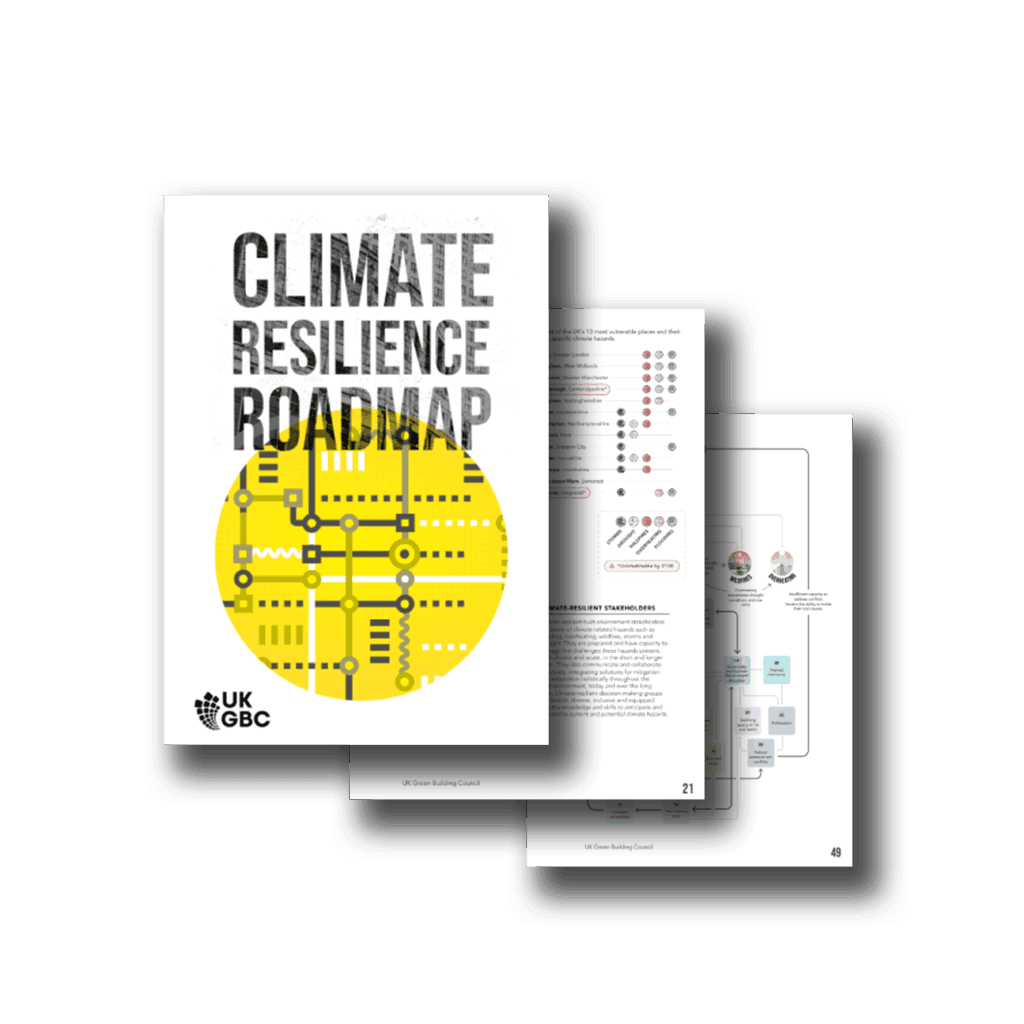Climate Resilience Definitions
General Definitions
The ability of a system, community or society exposed to climate hazards to resist, absorb, accommodate to, and recover from the effects of a hazard. A climate-resilient system responds in a timely and efficient manner, including through the preservation and restoration of its essential basic structures and functions.
The ability to quickly and appropriately respond when required. It’s closely related to “preparedness”, which encompasses planning and education strategies to enable both organisations and building users to effectively anticipate, address, and recover from relevant extreme weather events.
Climate adaptation refers to adjustments in ecological, social or economic systems in response to actual or expected climatic impacts and their effects. It refers to changes in processes, practices and structures to moderate potential damages or to benefit from opportunities associated with climate change.
(UNFCCC).
Built Environment Definitions
Climate resilience in the built environment is the ability of buildings, infrastructure, natural ecosystems and society to first anticipate and prepare, then endure, adapt and recover from extreme weather events as well as long-term climate changes. A climate-resilient built environment can maintain and restore its essential basic functions and structures, sustaining a comfortable and healthy environment, while heightening an awareness of risks and continuing to prepare.
(UKGBC Climate Resilience Roadmap).
Climate readiness in the built environment is the state of being prepared for current and future climate change hazards, risks, and impacts. This involves actions such as proactive policies, adapted physical assets, robust strategies and proactive collaboration by all stakeholders to reduce vulnerability to hazards, and improve the capacity to adapt. Climate readiness ensures all sectors, physical assets, ecosystems and communities of the built environment are capable of thriving and rapidly responding to climate hazards.
(UKGBC Climate Resilience Roadmap).
Climate adaptation in the built environment refers to the actions that cope with current and anticipated climate change effects. It involves modifying and upgrading new and existing buildings and infrastructure, as well as supporting people and ecosystems to withstand changes in climate, reducing damage and harm from climate impacts, promoting longevity in the current building stock, and innovating across the supply chain.

